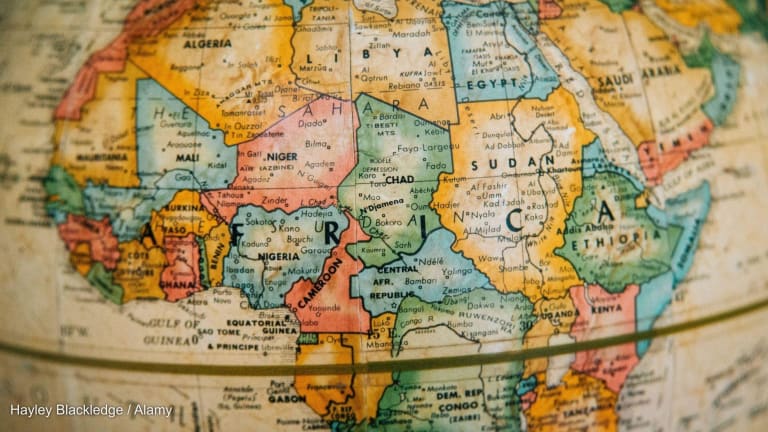
EDITOR’S NOTE: In its upcoming summit, will the G-20 step up to the challenge and try to fix the recent volatility in the global economy? Dirk Willem te Velde from the Overseas Development Institute speculates whether the bloc will decide on measures in the interest of poor, and the wider implications of any decision on monetary policy for the development cooperation architecture.
Monetary policy is one of a range of policies that require global coordination and, as September’s G-20 summit in St. Petersburg is approaching fast, a new set of challenges is confronting the global economy. There are few alternatives to the G-20 in providing such governance global public goods and even the G-20 faces immense difficulties in doing this effectively.
Expansionary policies (that is, where the total supply of money in an economy is increased more rapidly than usual) in developed G-20 countries first led to increased capital inflows and exchange rate appreciations in emerging markets. However, recent suggestions to “taper” that support now seem to be leading to the reverse, introducing volatility in emerging countries’ stock markets and exchange rates, with declines of up to 40 percent in India, South Africa and Indonesia in recent months.
Can the G20 step up?
So, can the upcoming G-20 summit step up to the challenge and smooth out this recent bout of volatility in the world economy? Will their actions be in the best interest of the poorest and most vulnerable economies? And what are the wider implications for the development cooperation architecture?
Volatility in emerging markets has returned as an important global issue. China is slowing down, India faces its most serious crisis in decades and South Africa has a weak currency. Total government, corporate and household debt in China is piling up, accounting for 200 percent of GDP. While India’s government deficit is high, many blame the rapid increase in corporate debt as a destabilising factor in India at present; a factor that requires structural solutions such as increased exports and productivity increases. Brazil announced a U.S. $60 billion currency intervention program to stem capital outflows. Meanwhile, South Africa has few reserves, and will have to use these to ride out its current crisis. Recent discussions at Jackson Hole were about the need for coordination — with a reaffirmation that, in an interconnected global economy, monetary policy in one country affects prospects in many others. Efficient, coordinated monetary policy is good, but uncoordinated actions leading to unnecessary volatility are not.
Consequences for the poorest and most vulnerable economies
An unorderly winding down of the monetary stimulus has direct consequences for emerging markets, as witnessed recently. But it also has direct consequences for the poorest economies. For example, there can be direct financial contagion through planned African bond issuance. While African government bonds were still oversubscribed in Ghana and Nigeria in recent months, the yields on African bonds have already increased under the expectation that U.S. interest rates will rise. This could mean higher annual costs of $10 million to service a typical bond issue of $500 million, if countries do not have local financing alternatives. But the indirect consequences could be much larger when greater than usual volatility and slower growth in emerging markets more than offsets positive news from the U.S. and Eurozone, worsening the global conditions in which low-income countries grow. The IMF estimates that a one per cent decrease in China’s investment would decrease sub-Saharan African exports by 0.3 percent. ODI has examined the vulnerabilities of LICs to a slowdown in China. Moreover, it is often the smallest, poorest and most vulnerable countries that suffer (that is, they experience declines in economic growth rates) most from global slowdowns. For example, small states did much worse after the global financial crisis than other developing countries.
At the same time, LICs can be part of the solution to the global reallocation challenge, which needs to address cross-border coordination failures amongst borrowers and lenders. LICs can absorb large amounts of finance, for example, for infrastructure or trade finance, with the great potential for economic growth and productivity change, and hence profitable opportunities benefitting both the G-20 and LICs. The IMF pointed out that the fiscal multiplier in developing countries for government consumption is smaller than zero, but it is around 1.5 for government investment (mostly higher than in developed countries), albeit varying by trade, exchange rate and debt regime. Profit rates on foreign direct investment in the, admittedly thinner, markets of Africa are still much higher than elsewhere. Hence unrealized opportunities abound.
What next for the G20 and development?
So what G-20 measures are required now? There is a need to see a much more integrated agenda amongst three separate parts of the G-20’s agenda: i) strong, sustainable and balanced growth; (ii) financing for investment; and iii) development. Back in 2010, a number of global experts argued for a G-20 partnership for growth in LICs that would combine these aspects in an integrated manner, with a new agenda ensuring policy coherence. The G-20 Development Working Group has addressed only part of this agenda.
To be fair, on one general measure, the G-20 development agenda is successful — that is, in its overarching narrative of ”narrowing the development gap.” The productivity gap between LICs and OECD economies, as proxied by GDP per capita, is still more than 96 percent, (and 93 percent for sub-Saharan Africa and the OECD), but in LICs and in Africa, productivity (relative to the OECD countries) has increased by around 3 percent annually over 2010-2012 (implying convergence and a narrowing of the development gap). It suggests that, at current rates, African countries are expected to reach 75 percent of the OECD’s projected GDP per capita within 75 years. Of course, one could reasonably question the contribution of the G-20 development agenda. The G-20’s own assessment will be released this week.
The G-20 development agenda could indeed be more effective if there was a new partnership between the G-20 and developing countries, which could coordinate core G-20 issues and deal with spillover issues such as monetary policy, tax, base erosion and profit shifting. In the area of tax it could now carry on with the work of the G-8 and sustain other recent discussions on tax evasion, avoidance, transparency and transfer pricing.
My advice for the G-20’s development agenda would be to move more confidently into a beyond-aid agenda, with an explicit objective to leverage G-20 investment for the benefit of G-20 and LICs, while reemphasising structural transformation, growth and productivity as the only sustainable bases for development. One can look at the importance of innovation and productivity change, in this overview for the DfID-ESRC Growth Research Program, McMillan and Rodrik argue it is important to raise resources flowing into manufacturing to increase aggregate productivity.
Even if this G-20 summit does not achieve all of this in one go, next week’s deliberations might help to frame a forward-looking G-20 development outlook, which can also inform beyond-aid discussions in the context of post-2015 discussions. At least it will have brought the importance of economic growth and productivity for development to the forefront after more than a decade of neglect under the MDGs. This can help to inspire the post-2015 discussions, which could do with more economic and financial voices.
Edited for style and republished with permission from the Overseas Development Institute. Read the original article.




